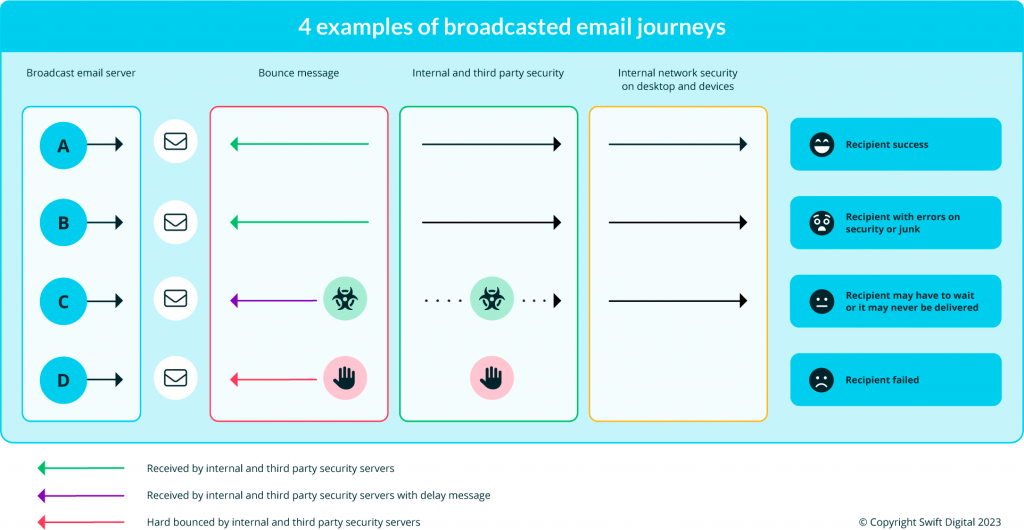- Have any questions?
- 02 7200 2179
- media@commsroom.co
- Have any questions?
- 02 7200 2179
- media@commsroom.co

Email deliverability is about sending an email that reaches your subscribers’ inboxes, it is key to running a successful email marketing campaign.
Swift Digital has been working with local, state and federal government departments for over 15 years to create professional employee communications and help them perfect their email deliverability to ensure their emails land in their subscriber’s inboxes every time.
High bounce rates mean an unusual amount of emails are not being received. These may be erroneously marked as hard bounces, which excludes them from future sending. This causes a drop in valid email addresses to which you send.
Suppose you believe that your data list is clean (which many organisations and businesses do believe), and you can compare with previous email publishing results that the rate of engagement has dropped significantly.
High bounce rates mean an unusual amount of emails are not being received.
There are three key areas we need to focus on when trying to find the root cause of email deliverability failure:
The public sector, in particular, needs to communicate internally and send internal emails to their stakeholders and other government departments. Each government has its own mail servers, third-party security software and internal IT network configurations, this means the journey of a public sector email can have a more complex path.
The journey of a public sector email can have a more complex path.
The diagram below simplifies an email’s journey from the sender to the recipient. Before we detail these journeys, we highlight three assumptions:
Journey A is an email that passes the third-party internal and internal email servers’ configuration allowing it into the organisation’s network. It is also accepted by the internal network protocol. The recipient receives the email.
Journey B
Journey B is an email that passes the third-party internal and internal email servers’ configuration, allowing it into the organisation’s network. However, it is marked as suspicious by the internal network protocol.
The recipient receives the email, but it comes with a warning or lands in your spam or junk folder. In this case the internal network configuration is at odds with the third-party and internal email network settings. In this situation, you should notify your network IT manager.
Journey C
Journey C is an email that did not pass the internal and third-party mail servers. The security configuration finds the incoming email suspicious. In such a case, it will be quarantined in the mail server until it is released. The recipient will receive their emails late as the emails need to be released to them after it passes the quarantine. At this point, the email can be rejected depending on the rules set here. If rejected, it will send a bounce message back to the broadcast email server.
Journey D
Journey D is an email that was immediately rejected by the internal and third-party mail servers. A bounce message will be returned to the broadcast server. In this case, the recipient will not receive the email.
If you encounter any scenarios from B, C and D, you can contact the parties involved in this journey. Alternatively, you can simply request help from your broadcast server.

At Swift Digital, we pride ourselves on the responsiveness of such incidents. Our email deliverability team can help you troubleshoot which part of the journey is causing the issue. The speed and resolution are key to ensuring your email reaches your intended recipients.
In most unsuccessful deliveries, your emails may receive erroneous hard bounce codes, impeding your email deliverability. Your email deliverability team should be able to troubleshoot, validate the issue and unbounce accordingly to ensure smooth deliverability for your next send.
Swift Digital’s email deliverability managers are experienced and can help you troubleshoot your email deliverability problems and ensure your email lands in the inbox every time. Our priority is ensuring your emails reach your subscribers. Our deliverability reputation score is 99%.
Download Swift Digital’s email deliverability guide to help ensure your emails land in your subscriber’s inbox every time.